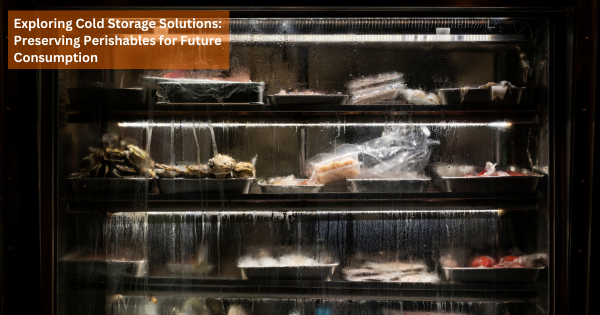Cold Storage Solutions: How to Preserve Perishables for the Future

Introduction:
Contact SafeStorage For Cost-Effective Packers & Movers For Your Items. Call 8088848484 SafeStorage.
The role of preventing food items from getting spares in the whole preservation of foods may not be overlooked. Whether you are a small-scale farmer, restaurant owner, or a house owner, you need to establish their long or short-term preservation of perishables. This is to allow the decreased wastage of your expenses and increased profits. It is here where quite a few Cold Storage Solutions emerge, providing either of the following to the individual depending on his or her needs and conditions.
Understanding Cold Storage:
Temperature control and cold manipulation are the principal tasks of cold storage due to the maintenance of the high quality of products such as fruits, vegetables, meats, and dairy products. They remain below freezing, and typically only a little bit above refrigeration temperatures, which leads to microorganisms, mainly pathogenic, are unable to grow fast. By this, the longevity of perishable goods is greatly enhanced again, retaining their original quality and nutrition power for a longer time.
Types of Cold Storage Solutions:
Refrigeration Units:
Freezers and cold storage like walk-ins are often used for cold storage by many households, restaurants, grocery stores, and bulk food distribution companies. These units work at the high temperatures above (0°C-5°C) and are most useful for holding freeze-sensitive goods for a short period of time.
Freezers:
Freezing units guarantee a temperature which is lower than that of the freezing point of water. Usually, the temperature goes between -18°C and -23°C. Freezing accomplishes the very purpose for long. It acts as an absolute inhibitors for enzymatic and microbial processes that are responsible for food decomposition. Coolers are available in different sizes including small chest coolers like the ones used in the mercantile to large storage coolers for food producers and dealers.
Cold Rooms:
Cold rooms are bigger, fully insulated spaces with custom refrigeration equipment that works to knowing and regulating temperature and humidity. These facilities present in the foodservice establishments, supermarkets, and warehouses to keep bulk food supplies systems are usually used for the storage of perishable goods. Space in cold rooms is spacious and flexible when to standard refrigeration units while they are large enough to store lots of things and to relocate them any time there is a need.
Refrigerated Trucks and Containers:
The chilled transport chain is an indispensable element in supply chain management, providing the conditions necessary for a perishable product to travel from growers to the end customers. Fridges on trucks and containers have inbuilt cooling systems that are pre-configured for the particular temperature that is favourable for the cargo. These systems safeguard the products from getting spoilt during shipping.
Benefits of Cold Storage Solutions:
Extended Shelf Life:
Walk-in cooler slows down the natural spoilage of quickly decaying goods and keeps them safe for warehousing for much longer.
Reduced Food Waste:
Through cold storage conservation, food hazards disappearing is aided at various stages of food chain, namely production and distribution by manufacturers and suppliers to retailers and consumers.
Preservation of Nutritional Value:
Fresh-keeping foods contribute evenly to the storage of nutritional value, allowing buyers to be acquainted with natural and trustworthy product through much longer periods.
Improved Inventory Management:
Businesses can enhance their capacity to regulate their inventory and the risk factors such as stock out and food spoilage that can cause the systematic loss of money through deploying correct cold storage systems.
Frequently Asked Questions (FAQs)
1. What is cold storage, and why is it required?
2. What are the different types of cold storage solutions?
3. In what ways does cold storage minimize wastage of food?
4. In which industries do cold storage units come into use?
5. How do I select an appropriate cold storage solution for my business?
6. Refrigeration and freezing: what is the difference?
7. Should refrigerated trucks be employed for shipping perishable products?
8. Does cold storage serve non-food products?
9. What is the significance of energy efficiency in cold storage?
10. How are businesses supposed to properly maintain cold storage?
Understanding Cold Storage
Types of Cold Storage Solutions
Refrigeration Units
Refrigeration appliances like refrigerators and walk-in refrigerators are installed in houses, food storage warehouses, restaurants, and hypermarkets. The temperature is between 0°C and 5°C, which is ideal for short-term storage of freeze-sensitive foods.
Freezers
Cold Rooms
Refrigerated Trucks and Containers
Benefits of Cold Storage Solutions
Extended Shelf Life
Cold storage delay natural spoilage and extend the usage life of perishable items.
Lower Food Waste
Protection of Nutritional Quality
Improved Stock Management
Conclusion:
Tags: Cold Storage | Cold Storage Units | Food Preservation | Pharma Storage | Perishable Storage | Temperature-Controlled Storage